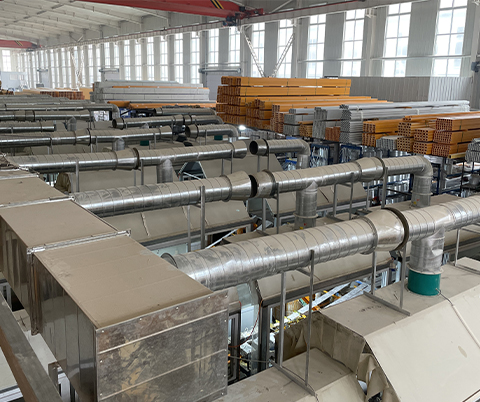loading...
- No. 9, Xingyuan South Street, Dongwaihuan Road, Zaoqiang County, Hengshui, Hebei, China
- admin@zjcomposites.com
- +86 15097380338
- Welcome to visit our website!
water treatment systems
Water Treatment Systems An Overview
Water is an essential resource for life, and ensuring its cleanliness and safety is critical for public health. Water treatment systems play a vital role in the purification of water, making it safe for consumption and industrial use. These systems encompass various processes designed to remove contaminants, pathogens, and other undesirable substances from water.
At the core of water treatment systems are several key processes, beginning with the intake of raw water, which may come from rivers, lakes, or underground sources. The first step often involves screening, where large debris like leaves and plastics are removed. Following this, sedimentation occurs, allowing heavier particles to settle at the bottom of a tank. This clarification process is essential in reducing turbidity before further treatment.
Once the water is clarified, it undergoes filtration to remove smaller particles and microorganisms. Different types of filters, such as sand filters, activated carbon filters, and membrane filtration systems, are employed depending on the specific contaminants present in the water. Activated carbon is particularly effective at removing organic compounds and chlorine, which can affect the taste and odor of water.
water treatment systems

Disinfection is another crucial step in water treatment. Common methods include chlorination, ultraviolet (UV) radiation, and ozonation. Chlorination, the most widely used method, involves adding chlorine to kill pathogenic bacteria and viruses. UV treatment, on the other hand, uses light to effectively inactivate microorganisms without adding any chemicals. Ozonation, while less common, is a powerful technique that decomposes into oxygen, leaving no chemical residue.
After treatment, water is typically stored in reservoirs or tanks until it is distributed to consumers. In many developed countries, water treatment systems are highly regulated and monitored to ensure compliance with safety standards. However, in developing regions, challenges such as inadequate infrastructure and limited resources can hinder effective water treatment.
Innovations in water treatment technology are continually emerging. Solutions like advanced oxidation processes, biofiltration, and nanotechnology are being explored to enhance efficiency and effectiveness. Moreover, the growing concern over emerging contaminants such as microplastics and pharmaceuticals is leading researchers to develop new methods for their removal.
In conclusion, water treatment systems are essential in safeguarding public health by ensuring access to clean and safe water. As global water demands increase, continuous advancements in these systems will be necessary not only to meet current needs but also to address future challenges in water quality and availability.
-
The Rise of FRP Profiles: Strong, Lightweight, and Built to LastNewsJul.14,2025
-
SMC Panel Tanks: A Modern Water Storage Solution for All EnvironmentsNewsJul.14,2025
-
GRP Grating: A Modern Solution for Safe and Durable Access SystemsNewsJul.14,2025
-
Galvanized Steel Water Tanks: Durable, Reliable, and Ready for UseNewsJul.14,2025
-
FRP Mini Mesh Grating: The Safer, Smarter Flooring SolutionNewsJul.14,2025
-
Exploring FRP Vessels: Durable Solutions for Modern Fluid HandlingNewsJul.14,2025
-
GRP Structures: The Future of Lightweight, High-Performance EngineeringNewsJun.20,2025
